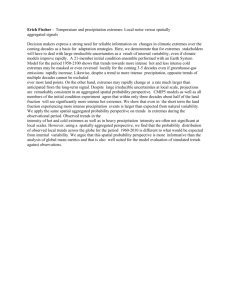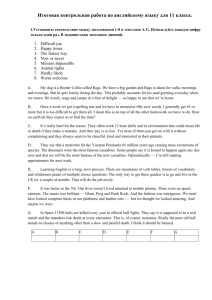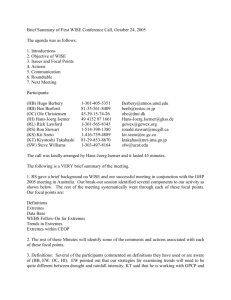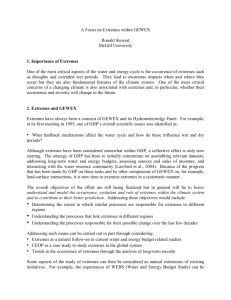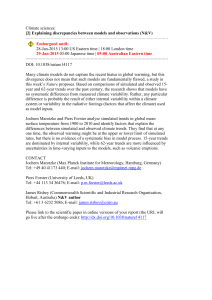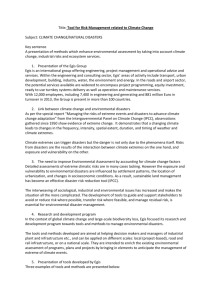Read entire abstract
advertisement
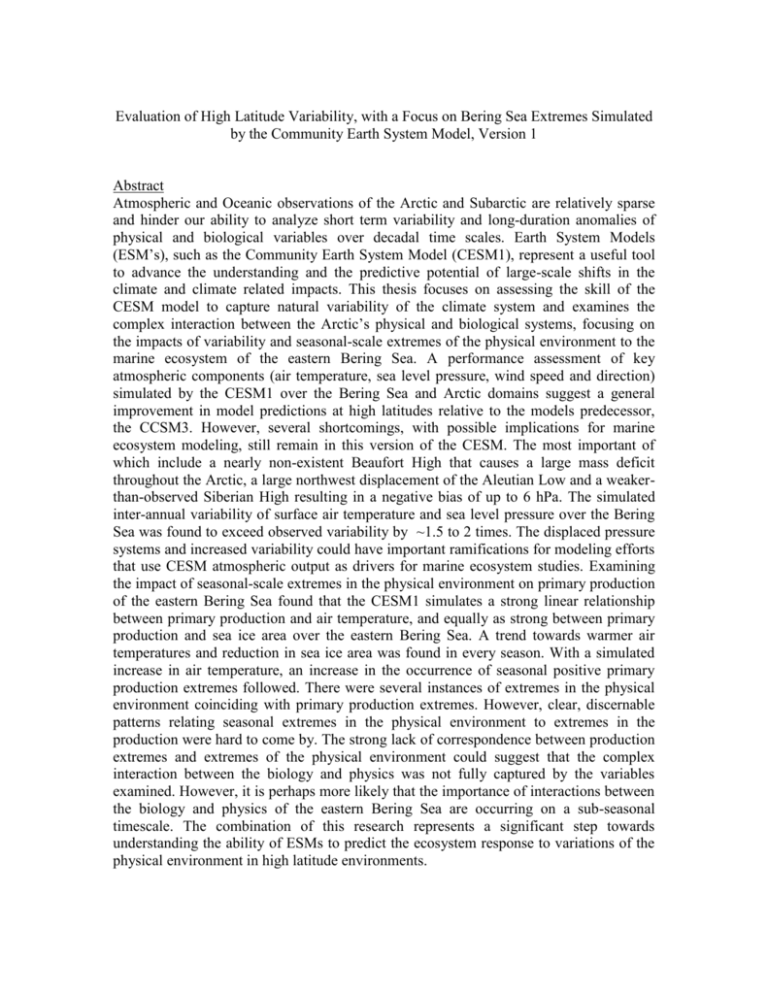
Evaluation of High Latitude Variability, with a Focus on Bering Sea Extremes Simulated by the Community Earth System Model, Version 1 Abstract Atmospheric and Oceanic observations of the Arctic and Subarctic are relatively sparse and hinder our ability to analyze short term variability and long-duration anomalies of physical and biological variables over decadal time scales. Earth System Models (ESM’s), such as the Community Earth System Model (CESM1), represent a useful tool to advance the understanding and the predictive potential of large-scale shifts in the climate and climate related impacts. This thesis focuses on assessing the skill of the CESM model to capture natural variability of the climate system and examines the complex interaction between the Arctic’s physical and biological systems, focusing on the impacts of variability and seasonal-scale extremes of the physical environment to the marine ecosystem of the eastern Bering Sea. A performance assessment of key atmospheric components (air temperature, sea level pressure, wind speed and direction) simulated by the CESM1 over the Bering Sea and Arctic domains suggest a general improvement in model predictions at high latitudes relative to the models predecessor, the CCSM3. However, several shortcomings, with possible implications for marine ecosystem modeling, still remain in this version of the CESM. The most important of which include a nearly non-existent Beaufort High that causes a large mass deficit throughout the Arctic, a large northwest displacement of the Aleutian Low and a weakerthan-observed Siberian High resulting in a negative bias of up to 6 hPa. The simulated inter-annual variability of surface air temperature and sea level pressure over the Bering Sea was found to exceed observed variability by ~1.5 to 2 times. The displaced pressure systems and increased variability could have important ramifications for modeling efforts that use CESM atmospheric output as drivers for marine ecosystem studies. Examining the impact of seasonal-scale extremes in the physical environment on primary production of the eastern Bering Sea found that the CESM1 simulates a strong linear relationship between primary production and air temperature, and equally as strong between primary production and sea ice area over the eastern Bering Sea. A trend towards warmer air temperatures and reduction in sea ice area was found in every season. With a simulated increase in air temperature, an increase in the occurrence of seasonal positive primary production extremes followed. There were several instances of extremes in the physical environment coinciding with primary production extremes. However, clear, discernable patterns relating seasonal extremes in the physical environment to extremes in the production were hard to come by. The strong lack of correspondence between production extremes and extremes of the physical environment could suggest that the complex interaction between the biology and physics was not fully captured by the variables examined. However, it is perhaps more likely that the importance of interactions between the biology and physics of the eastern Bering Sea are occurring on a sub-seasonal timescale. The combination of this research represents a significant step towards understanding the ability of ESMs to predict the ecosystem response to variations of the physical environment in high latitude environments.
